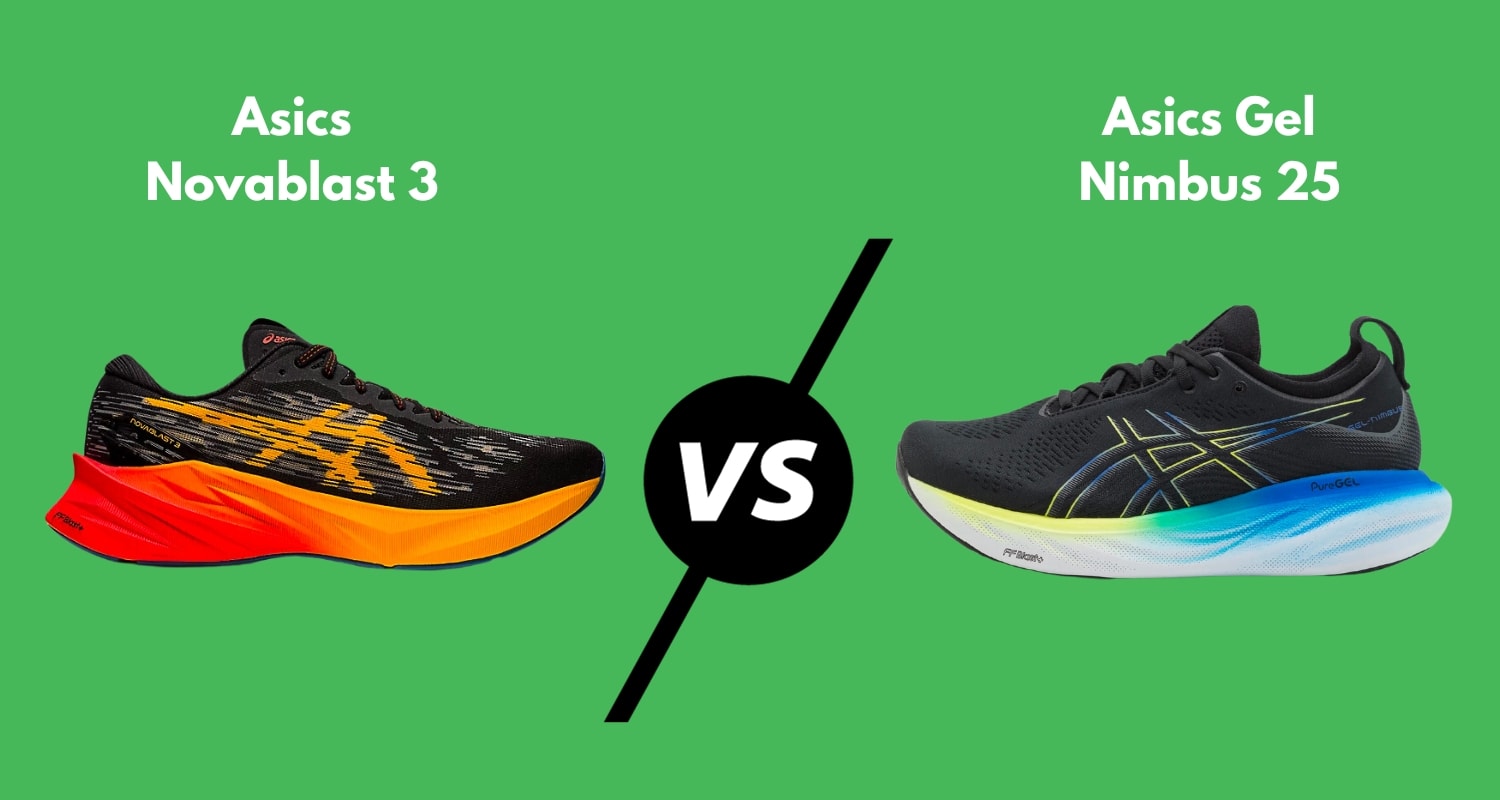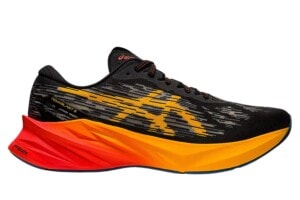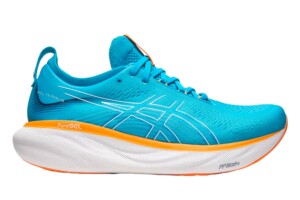Asics Novablast 3 vs Nimbus 25: Which One? (2024 Comparison)

Let’s take a look at two bestsellers in Asics’ collection: the Novablast and the Nimbus. As you can see from the numbers (indicating the version of each model), the Nimbus has been around for a long time, while the Novablast is a relative newcomer. (I say “relative” because the world of running shoes is a fast-paced one, and three years is already a very long time!).
However, the Nimbus 25 has changed so much from the previous iterations that you could almost consider it an entirely new shoe. Continue reading to find out which is most suitable for your needs.
Cushioning and Ride
Let’s start by appreciating the Asics Nimbus 25’s massive stack: 41.5 mm in the heel – that’s huge (even beyond the official regulation of World Athletics, in case you’re considering using these shoes for a race). In comparison, the Novablast 3 is more modest, with 31 mm.
Both shoes come with an 8-mm drop, which is standard and accessible for most runners. The underfoot feel is soft on both shoes, delivering a comfortable, cushioned feeling even on longer runs.
While a soft configuration can spell trouble regarding stability, these shoes do an excellent job in this area. They should be suitable even for light overpronators. However, if you need advanced support, we recommend looking at something more guiding, like the Kayano.
The ride’s responsiveness is where these two models differ significantly. The Nimbus 25 is quite smooth but without much bounce. On the other hand, the Novablast 3 is lively and fun, even at a faster pace during speed work (e.g., interval training).
Last but not least, the Asics Novablast 3 is much lighter than the Nimbus 25: 8.9 oz/253 g vs. 10.5 oz/299 g. It makes the former more agile.
Foot Lockdown and Fit
Asics has mastered the art of perfectly locking down the foot for a secure and comfortable fit, which shows with these models. They run true to size with a good volume inside to accommodate most foot shapes and sizes. For runners with wide feet, you can always go for a large version if needed.
Overall, the Nimbus is slightly more comfortable. Indeed, the tongue of the Novablast is too thin and can be annoying if it slips. We hope the 4th iteration will fix it.
Asics Novablast vs Nimbus: Which One Is Best for You?
We recommend the Asics Novablast 3 over the Nimbus 25 for its greater versatility, lighter build, and enhanced responsiveness. It’s a very good all-around shoe that can do anything, including uptempo training and long distances. Its only potential drawback (besides the aforementioned tongue) is its subpar grip on wet pavement.
On the other hand, the Nimbus 25 is a solid pick, but it’s bulky, and its new max cushion configuration is a bit overkill. However, it will delight runners looking for one of the most comfortable, shock-absorbing running shoes on the market today.
Side-By-Side Comparison Table
|
9.1  |
9  |
|
|---|---|---|
| Overview | ||
| Description | The Novablast 3 is one of Asics' most versatile and fun shoes. This new model is much more stable, correcting the v2's main drawback. | The Asics Gel Nimbus 25 marks a tectonic shift in the popular collection with more comfortable but less responsive max cushion. |
|
9
9.5
9
9.5
9
9
9
|
9.5
8
9.5
9
9
8
9
| |
| Facts | ||
| Terrain | Road | Road |
| Support | Neutral | Neutral |
| Heel stack height | 31 mm | 41.5 mm |
| Forefoot stack height | 23 mm | 33.5 mm |
| Heel-to-toe drop | 8 mm | 8 mm |
| Weight (men) | 253 g | 299 g |
| Weight (women) | 212 g | 260 g |
| Features | Recycled materials | Heavy runner, Recycled materials |
| Athletes | ||
| Release year | 2023 | 2023 |
| Technologies | ||
| Outsole | AHAR | AHAR+ |
| Midsole | ASICS FLYTEFOAM BLAST PLUS | FlyteFoam Blast Eco, PureGEL, OrthoLite X-55 |
| Upper | Jacquard mesh, tongue adjustment system | Technical Mesh |
| Cushioning | ||
| Cushioning | Soft | Soft |
| Responsiveness | Medium | Medium |
| Use | ||
| Distance | Mid, 10K, Half marathon, Long, Marathon | Mid, 10K, Half marathon, Long, Marathon |
| Speed | Slow, Moderate | Slow, Moderate |
| Workouts | Daily running | Daily running, Recovery |
